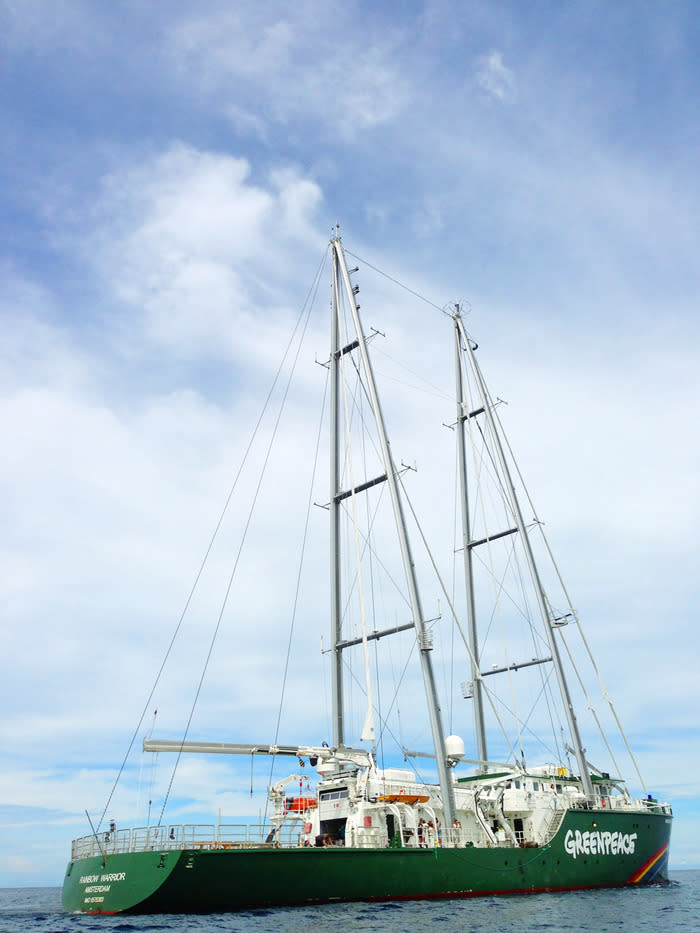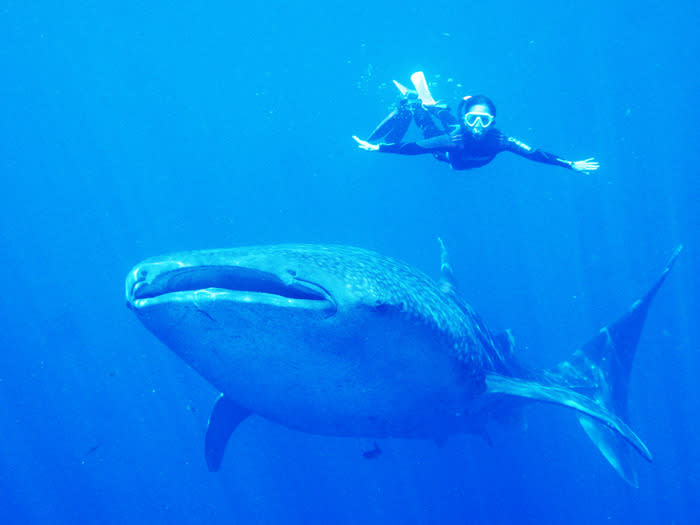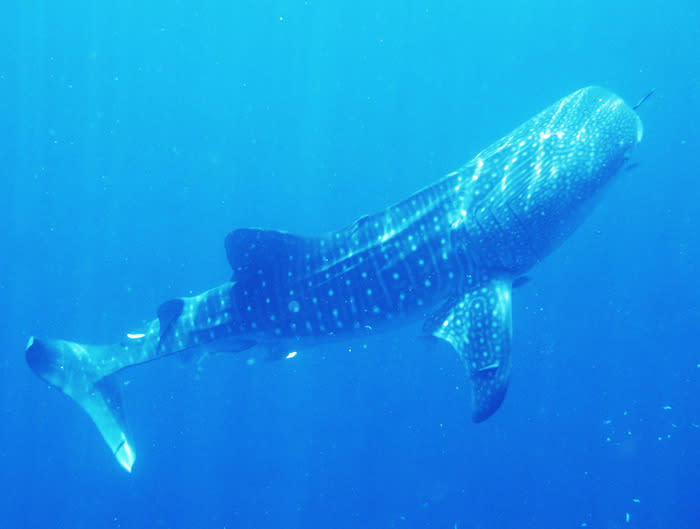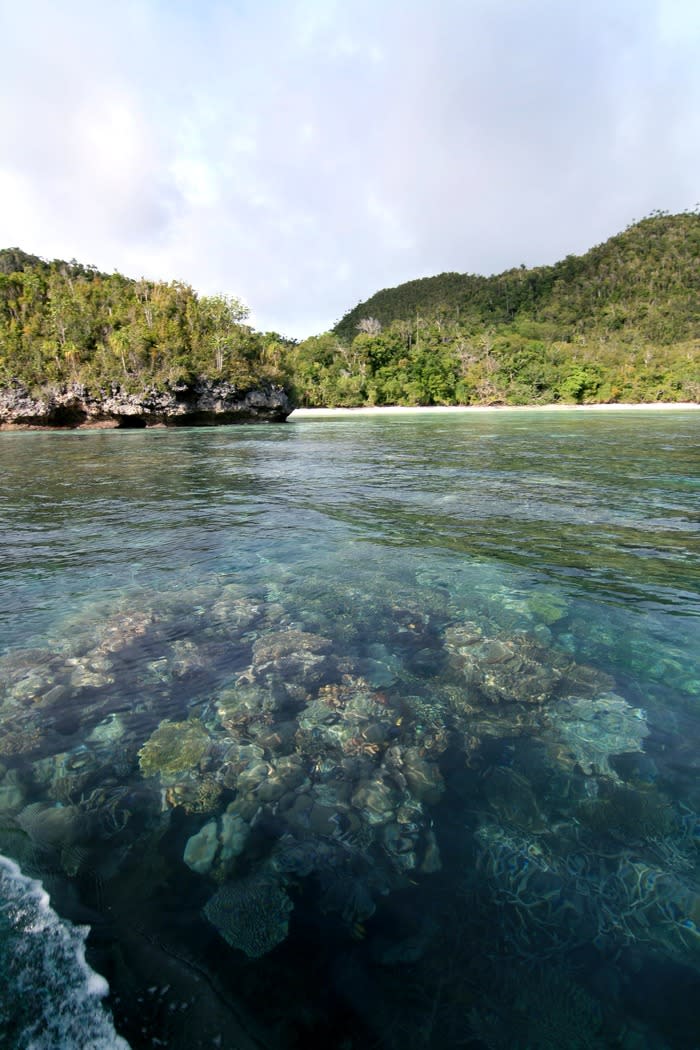Sailing around Papua on board of Rainbow Warrior III
The Rainbow Warrior, a ship belonging to environmental campaigner Greenpeace, is currently in Indonesia for a tour and I climbed on board last month to join several legs of the organization’s trip in Papua.
The ship is scheduled to be in the archipelago until June 9 for its tour and its campaign titled “100% Indonesia: Together, We Protect Our Ocean and Forest”, but I only joined them from May 10th to May 17th to explore the island’s coastal areas, dubbed “the bird’s head” due to its shape.
The Rainbow Warrior ship is actually a third version, after the first one was bombed in 1985 and the second retired in 2011. It is claimed to be the most eco-friendly of its type and this is its first visit to Indonesia.
“Indonesia is a home to some of the most important biodiversity on our planet,” ship captain Pete Willcox said.
However, he added, deforestation and destruction of the ocean have threatened its sustainability.
After leaving the provincial capital Jayapura for Manokwari, it was almost three days before we arrived at dive sites called “Tridachna”.
The name is taken from a certain genus of saltwater clam - particularly fitting since the site houses many different types of clams.
We did two dives in two different dive sites named “Tridachna” and “Tridachna Atol”. Whilethe coral reef was pretty impressive, we only came across a few small coral fishes and no pelagic fish, nor predators, such as sharks, likely implying that the sea is in a critical condition.
“This is the reason why Rainbow Warrior came to Indonesia – to witness the beauty of the oceans and forests, to understand what is at stake for fisheries as well as the big threats,” Mark Dia, the Regional Ocean Campaign Manager with Greenpeace Southeast Asia, said.
The next day, we arrived in Kwatisore, in the area of Cendrawasih Bay National Park.
There we were divided into two groups: “The Forest Campaigner” and “The Ocean Campaigner”. The “Forest” group’s agenda was to visit “Kwatisore” village and talk to the community to get a better understanding of how they protect the forest, while the “Ocean” group’s agenda was to swim with whale sharks.
As a scuba diver, I joined the “Ocean” group. At 7.30 a.m., we went to the designated spot on a speedboat and asked the first fishermen we saw whether they had seen whale sharks that morning.
“Yes, there were three of them this morning at around 6 a.m., but they left already”, one said.
Luck shone on us afterwards as the next boat was actually feeding four whale sharks with small fish. It was a sort of ritual for fishermen in the area to feed the whale shark with ikan puri (small fish) as they believed it would bring them luck.
The local name for whale sharks in Papua is Gurano Bintang; Gurano means sharks, while Bintang means stars, attributed to the fact that the grey body of this shark is dotted with a lot of white spots .
Syafruddin, a fisherman from Makassar, who has been living in Papua for the past 15 years and fishing in Kwatisore’s waters for the past seven years, said that he constantly sees whale sharks in the area.
But Riyanni Djangkaru, an avid scuba-diver, who was also the host of a famous local travel television program Jejak Petualang, said the condition in Kwatisore’s waters is different nowadays compared to when she came there for the first time in 2010.
“The first time I came here I was surrounded by 19 whale sharks. There was only one fishing boat at that time, but now there are several of them [fishing boats], so the whale sharks spread out among these fishing boats”, he said.
I snorkeled with those four whale sharks from 8 a.m. until 1 p.m.. Time surely flies when having a good time. Surrounded by fish with a size of over ten meters that swam very close to me, sometimes even face-to-face, was such a mind-blowing experience.
My heart beat went several gears up when one of them came towards me with its mouth wide open. I thought it would harm me, but apparently these sharks were smart. They would swim deeper to evade us.
At other times, however, it was my turn to swim away to keep myself from coming into contact with these creatures, when they were only a few inches away from me.
The best part was when I tried free diving, holding my breath and following the whale shark to swim deeper in the deep blue sea. Being only a few inches away from the top of its body made me feel so small and it was quite exhilarating.
“This is one of the most amazing experiences that I’ve had in the past few years with Rainbow Warrior,” Adrian, a Rainbow Warrior crew member from Panama said before we left Cendrawasih Bay,
The Rainbow Warrior III and its crew are witnessing the beauty of Indonesia while trying to raise awareness to protect that beauty.
A Rainbow Warrior Open Tour was opened for those who in Bali on May 31st and June 1st, free of charge.
Meanwhile for those who in Jakarta, the tour, which is part of Greenpeace’s “Southeast Asia Ocean Defender Tour 2013” will also be held on June 8 and 9 in city, free of charge.
How to get to Cendrawasih Bay
Travelers can fly to Nabire, then take a speedboat to Ahe Island. Another way is to charter a dive boat from Manokwari. This way, one can also dive in several dive sites before getting to the whale sharks.
Read also:
Raja Ampat, Papua's underwater paradise






